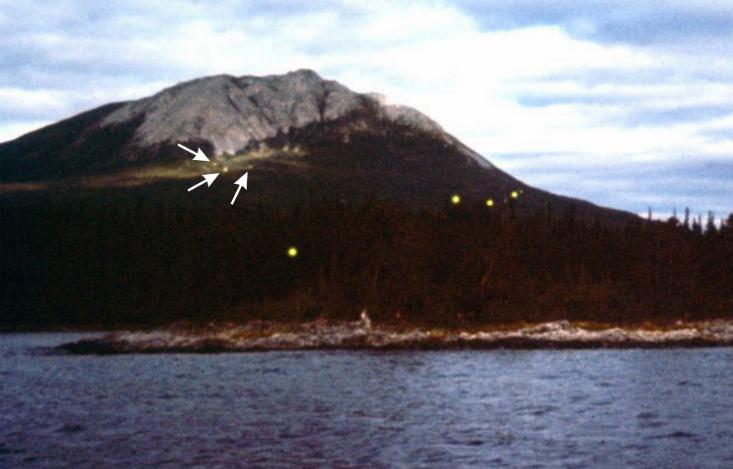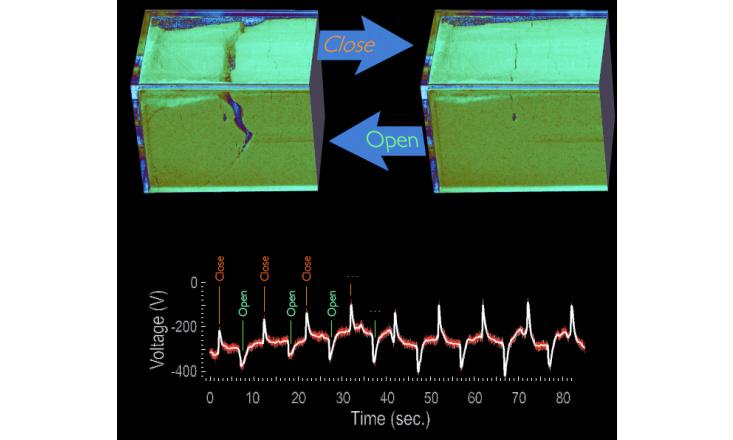
For centuries, people have been reporting mysterious lights along the ground and in the sky soon before an earthquake hits. But it wasn’t until 1966 that there was some solid evidence of the lights, when one man was to photograph of the phenomenon, during a series of earthquakes in Japan. Since then the evidence has mounted that accounts of lights aren’t just crazed delusions, but in fact a real yet mysterious phenomenon. There have been lots of guesses about what causes the lights. Earlier this month, Brandon Keim covered one of those theories—Friedemann Freund’s idea that shifting tectonic plates create enough pressure to break weak links between oxygen atoms in certain rocks, causing electrical currents that lead to lightning-like flashes emerging from the ground. Freund hasn’t been able to prove his theory just yet. Keim notes that another geophysicist couldn’t replicate his work, while a seismologist surmised that Freund would simply have to wait for the slow moving field of geophysics to catch up.
One challenge here is that it’s really hard to study earthquakes in the lab. A 6.0-magnitude earthquake generates 15,000 tons of TNT worth of energy—as much as a small atomic bomb. A 9.0-magnitude earthquake shakes the earth with the force of 480 million tons of TNT—30,000 atomic bombs. That’s not exactly something scientists can replicate easily. But Freund isn’t the only one taking on the challenge of trying to recreate earthquake conditions in the lab.
In a recent study by scientists at Rutgers University, researchers found that clumps of granular particles can spontaneously generate electrical voltages just before they break apart into smaller clumps. They first demonstrated the effect by grinding up Tylenol into a fine powder and putting the grains in a slowly spinning cylinder. As the powder stuck to the sides, clumped, and spun, it would reach a certain height and then break up in a mini-avalanche back down to the bottom of the cylinder. Each time it did, it briefly generated 100 volts. That voltage spike sometimes happened as many as five seconds before the actual avalanche occurred. They then showed something even stranger: that the effect worked with a huge range of insulating materials, from plastic disks to glass beads to baking flour. This, they argue, could be what’s causing the lights that people see just before earthquakes.
“Except for the fact that we cannot get these voltages to go away, I would call this ‘crackpot physics,’… [But] we have so far failed to account for a spurious influence that might cause them.”
The authors of the paper acknowledge that this is a very strange effect. “If you take a Tupperware container filled with flour and tip the container, when the flour shifts, voltages of around 100 volts inexplicably appear,” lead researcher Troy Shinbrot told Charles Choi at Our Amazing Planet. “Except for the fact that we cannot get these voltages to go away, I would call this ‘crackpot physics,’ and even as it is, I wish I could hedge my bets, but the voltages are very repeatable, and we have so far failed to account for a spurious influence that might cause them.”
While it’s strange to thing that simply tilting a container of flour might create power, it’s not entirely unprecedented. If you bite a Life Savers Wint O Green mint, it lights up in your mouth. If you slide Mercury against glass, it glows. And if you have the right camera to see it, even Scotch Tape generates light as its torn off the roll. The phenomenon is called triboluminescence, and Francis Bacon noticed it all the way back in 1605, when he saw that scratching a lump of sugar generated light.

But a weird phenomenon like earthquake lights could certainly have a weird explanation like triboluminescence. And while the voltages created by these experiments are small, the pressure and size of an entire fault line could create an effect millions of times larger than the little spark in the Tupperware of flour, says Shinbrot.
Freund says he was intrigued with the news from Shinbrot’s lab. “The observation is really well done, the experiments are well conducted, but the full understanding is not yet available,” he told Meeri Kim of the Washington Post. Freund plans to conduct some related experiments of his own this summer, which he hints might unify his own work with Shinbrot’s.
By making detailed observations of more real-world earthquakes and continuing with their lab experiments, researchers should get a better idea if they’re on the right track. But until seismology gets an LHC-style earthquake simulator, it may remain hard to know exactly what’s going on in the moments before an earthquake with such enormous energy hits.
Rose Eveleth is Nautilus’ special-media manager.






























